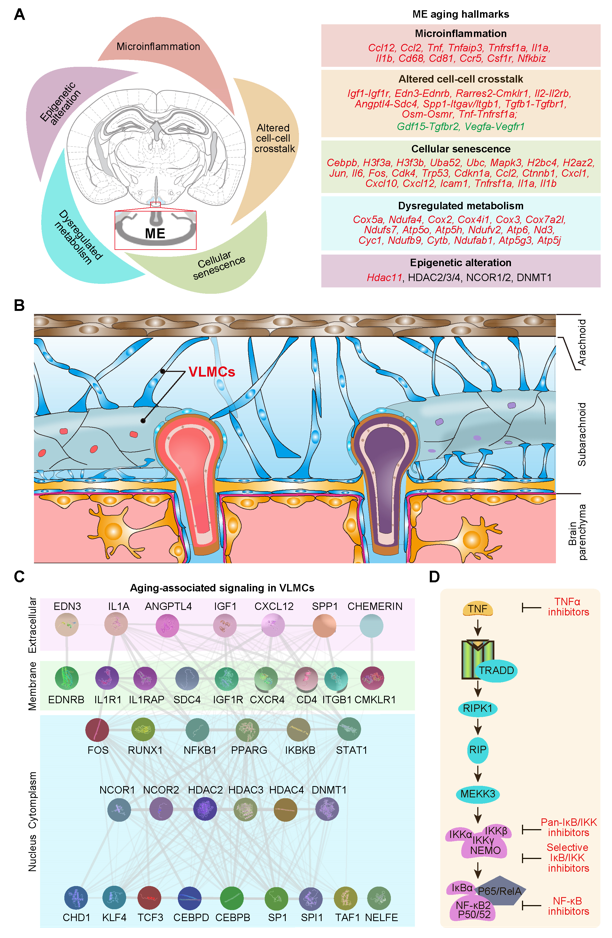01 16, 2022
Molecular and cellular drivers of hypothalamic aging

Aging is a slow and progressive natural process that compromises the physiological functions of cells, tissues, organs and systems. The aging of the hypothalamic median eminence (ME), a structural gate linking neural and endocrine systems, may impair hormone release, energy homeostasis and central sensing of circulating molecules, leading to systemic and reproductive aging. However, the molecular and cellular features of hypothalamic aging remain largely unknown.
Recently, a study published in Journal of Genetics and Genomics (JGG), led by Dr. Qing-Feng Wu from Institute of Genetics and Developmental Biology, Chinese Academy of Sciences (CAS), revealed the five aging hallmarks of hypothalamus and identified fibroblast-like vascular and leptomeningeal cells (VLMCs) as a critical cell population which might exacerbate aging process through secretory factors. The paper is available online https://www.sciencedirect.com/science/article/pii/S1673852722000042
In this study, we mapped the transcriptional landscape of young and middle-aged mouse ME at single-cell resolution, and revealed the common and cell-type-specific transcriptional changes within aging hypothalamus. The transcriptional changes in cell-intrinsic programs, cell-cell crosstalk and cell-extrinsic factors highlight five molecular features of hypothalamic aging and also implicate several potentially druggable targets at cellular, signaling and molecular levels. Importantly, our results suggest that different cell types are aging at different rates through distinct biological mechanism, and VLMCs may lead the asynchronized aging process among diverse cell types and drive local inflammation and cellular senescence via a unique secretome.
Together, this study uncovers how intrinsic and extrinsic features of each cell type in the hypothalamic ME are changed by the aging process, which will facilitate our understanding of brain aging and provide clues for efficient anti-aging intervention at the middle-aged stage.

A graphical summary showing the transcriptional features of aging ME and senescent VLMCs